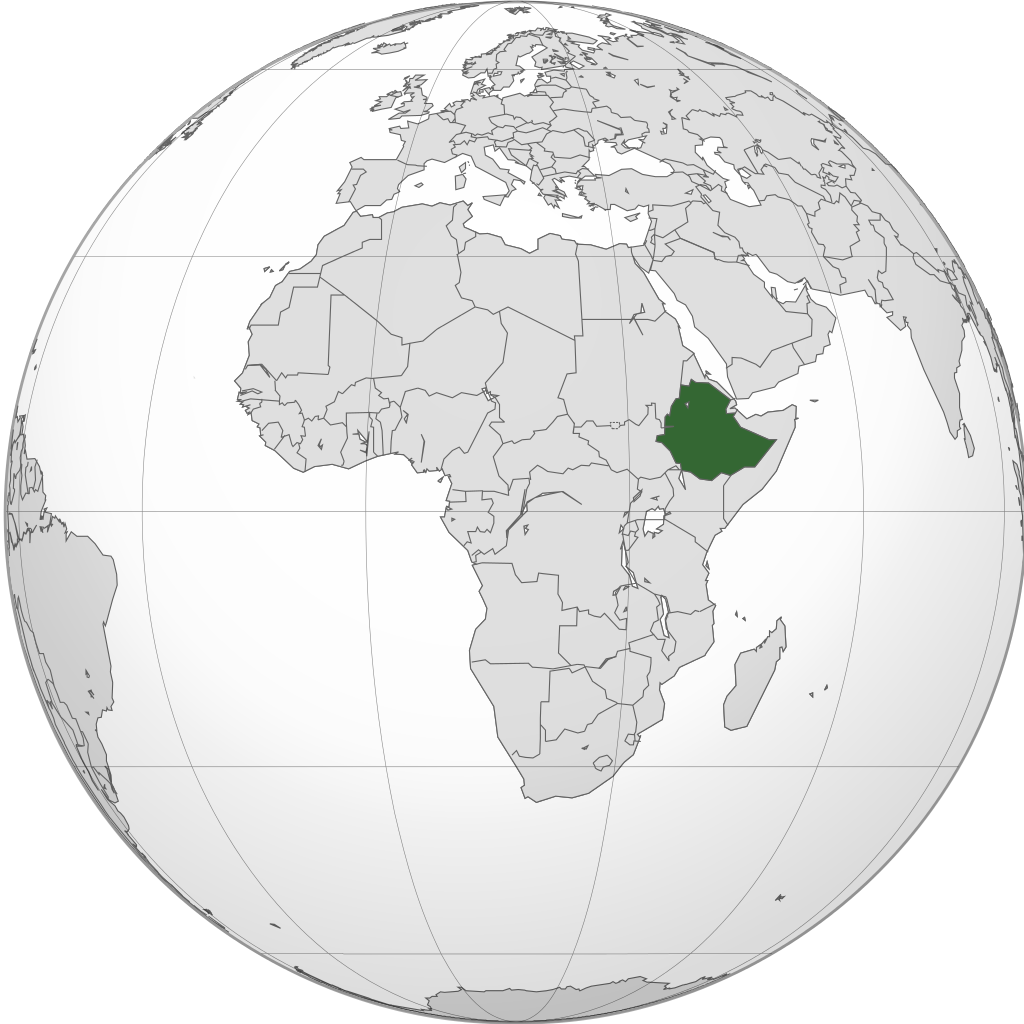Ethiopia, officially the Federal Democratic Republic of Ethiopia, is a landlocked country in East Africa.
History
Overview
The History of Ethiopia can be usefully categorized into four periods:
- To 1270: Antiquity
- To 1500: The Ethiopian Middle Ages (which ecompasses the beginning of the Zagwe Dynasty to the beginning of the emergence of Islam and the end of the early Solomoic period)
- To 1855: The Gondarine Period[1]
- To present day: The Modern Period (begining with the End of the Zemene Mesafint, "the Era of Princes") under Tewdros II in 1855.[2]
Italy attempted to colonize Ethiopia in the 19th century but was defeated by Emperor Menelik's forces in 1896. Fascist Italy overthrew Emperor Haile Selassie and occupied Ethiopia from 1936 to 1941. Haile Sellasie was reinstated as Emperor and continued to rule the country until 1974. Starting from the 50s, the United States started to exert neocolonial relations in Ethiopia.[3]
In 1974, the Ethiopian Revolution took place, which ultimately brought the Derg to power. The Derg was chaired initially by Mengistu Haile Mariam (he was replaced by Aman Adom in September 1974), who later became head of state in 1977. The monarchy was formally abolished in 1975,[4] and replaced by a socialist government in Ethiopia. In 1987, the Derg was formally dissolved and the Peoples Democratic Republic of Ethiopia founded,[5] which was overthrown by the TPLF and other groups in 1991, establishing the Transitional Government of Ethiopia.[6] In 1995, the Federal Democratic Republic of Ethiopia was founded.
Before 1270
1270-1500
1500-1855
1855-1974
1974-1991
1991-present day
Politics and Government'
Administrative Devisions
Constitution and Legal System
Economy
Military
International Relations
Demographics
There are over 80 ethnic groups in Ethiopia. The largest nations in the country are the Tigray (6.1%) and Amhara (27%), who speak Semitic languages,and the Somalis (6.2%) and the Oromo (34%), who speak a Cushitic language.[3]
According to the most recent census conducted by the Population Census Commision of the FDRE in 2007 (which recorded a population of 74 million), 43,5% of the Ethiopian Population are Orthodox Christian (Tewahedo), 18.6% Protestant (mostly Pent'ay) and 0,7% Catholic, which totals to a christian population of 62,8%.[7] In addition, 33.9% are Muslim,[7] 68% of which identify as Sunni, and 2% as Shia.[8] The census lists 2.6% of the population as being adherents to "traditional religions".[7]
Languages
References
- ↑ Harold G. Marcus (2002). A History of Ethiopia: Updated Edition: 'Chapter 2: The Golden Age of the Solomonic Dynasty, to 1500' (pp. 17-29). London: University of California Press. [LG]
- ↑ Bahru Zewde (2002). A History of Modern Ethiopia (1855-1991) (p. 21). Addis Abeba: Addis Abeba University Press. [LG]
- ↑ 3.0 3.1 Solyana Bekele (2021-08-09). "Smash neocolonialism in Ethiopia, erase the fake borders!" The Burning Spear. Archived from the original on 2022-07-29. Retrieved 2022-08-27.
- ↑ Bahru Zewde (2002). A History of Modern Ethiopia (1855-1991) (pp. 233-251). Addis Abeba: Addis Abeba University Press.
- ↑ Stefan Brüne (1990). IDEOLOGY, GOVERNMENT AND DEVELOPMENT - THE PEOPLE’S DEMOCRATIC REPUBLIC OF ETHIOPIA (p. 193). Northeast African Studies, vol. 12, no. 2/3,. doi: 10.2307/43660324 [HUB]
- ↑ Paul B. Henze (2004). Layers of Time: A History of Ethiopia (p. 330). Addis Abeba: Shama Books. [LG]
- ↑ 7.0 7.1 7.2 Federal Democratic Republic of Ethiopia Population Census Commission (2008). Summary and Statistical Report of the 2007 Population and Housing Census: Population Size by Age and Sex (p. 17). [PDF] United Nations Population Fund (UNFPA).
- ↑ "THE WORLD’S MUSLIMS: UNITY AND DIVERSITY" (2012-08-09). Pew Research Centre. Archived from the original. Retrieved 05.20.2023.
